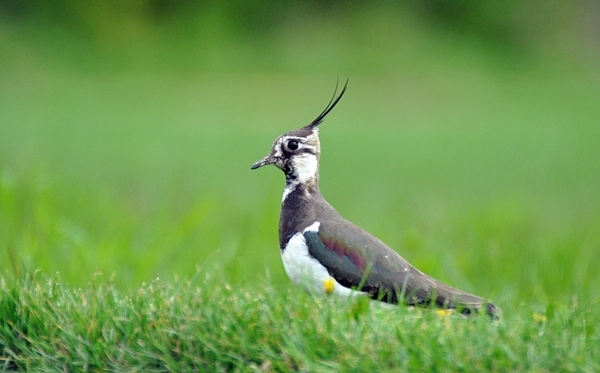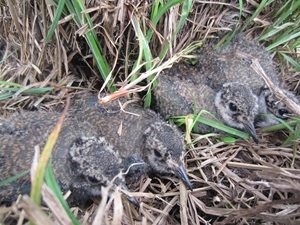
WADERS for Real, a project seeking to aid declining wader birds in the Avon Valley, has received a one-year extension.
Ecologists at the Game & Wildlife Conservation Trust (GWCT) began work on the EU LIFE+ funded project in 2014 in a river floodplain of high biodiversity interest.
The primary purpose of the project extension is to expand the project work to further key sites within the Avon Valley and enable more time for distribution of results to a wide audience. One of the main species of interest is the lapwing, a red-listed bird.
Helping with the work are two new field assistants - Ryan Burrell and Jodie Case.
Ryan, who has spent the past four years with the geographical information systems department at GWCT, will be monitoring lapwing movements between the damp grassland of the Avon Valley and arable fields adjoining the valley, as well as measuring habitat improvements.
 Jodie, a former volunteer at the Trust, will be implementing measures to reduce predation of wader nests and chicks on hotspot sites to see which are the most efficient.
Jodie, a former volunteer at the Trust, will be implementing measures to reduce predation of wader nests and chicks on hotspot sites to see which are the most efficient.
Ryan and Jodie will be joining project officer Lizzie Grayshon, who has worked on the project since early 2015, overseeing the day-to-day running of the project including farmer liaison and monitoring of project actions. Lizzie believes the extra year will enable the project to leave a better legacy.
“We are extremely grateful to have this extra year,” she said.
“Bird numbers do not respond instantly to management changes and the extra time will better enable us to fully evaluate the most effective strategies for these nationally-important species.
“If, as appears to be the case from our initial data, lapwings demonstrate flexibility in their choice of breeding site between years, we need to better understand which factors influence their decision to change site.”
Over the past 25 years, GWCT has documented a 70 per cent decline in numbers of breeding lapwings and an 83 per cent fall in breeding redshank in the Avon Valley.
But since the project commenced, GWCT ecologists have seen increases in these nationally declining birds in the Avon Valley, with lapwing pairs increasing from 62 in 2015 to 81 in 2016 and then 69 in 2017.
The project has involved establishing an environment to aid wader recovery, including plenty of habitat work, which involved manipulating the landscape by removing old fence lines and willow scrub as well as re-profiling 2.9 km of ditches, digging 1.6 km of new ditches and creating 23 scrapes to create more chick foraging habitat, along with the use of temporary electric fencing to reduce mammalian predation.
To find out more information about the project, visit gwct.org.uk/wadersforreal
Please support this vital conservation work
Notes to editors
The Game & Wildlife Conservation Trust – providing research-led conservation for a thriving countryside. The GWCT is an independent wildlife conservation charity which has carried out scientific research into Britain’s game and wildlife since the 1930s. We advise farmers and landowners on improving wildlife habitats. We employ more than 60 post-doctoral scientists and other research staff with expertise in areas such as birds, insects, mammals, farming, fish and statistics. We undertake our own research as well as projects funded by contract and grant-aid from government and private bodies.
For information, contact:
Eleanor Williams
Telephone: 07592 025476
Email: press@gwct.org.uk